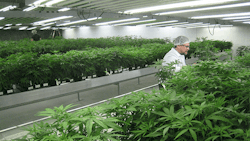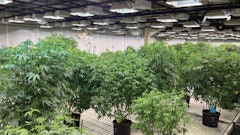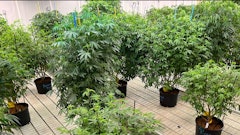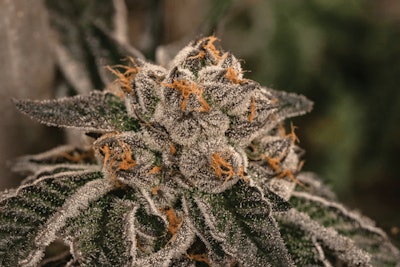
At Meraki Gardens, growing clean cannabis isn’t just a business decision, it’s an ethos. The Portland-based company is both Clean Green Certified and one of the few Kosher certified cultivation operations in the U.S. This makes the use of environmental controls to fight off pest and disease pressures all the more important, as the company is severely limited in what it can use to defend its crop. Having well thought-out airflow is crucial to the company maintaining its sustainable practices, according to Jordan Jenkins, Meraki Gardens’ head of cultivation.
Figuring out proper airflow is “an interesting balance because you want to get as many plants … in and grow,” he tells Cannabis Business Times. “We obviously want to maximize these rooms as much as possible, but the problem is we’re talking about the most vigorous, fastest growing plant on Earth. Some of our varieties are growing two … inches a day.”
That rapid plant growth creates a lot of humidity as the plants “sweat” moisture into the environment. If air circulation is lacking, that moisture can accumulate within the plant canopy, which can create a high-stress environment or one that attracts pests and diseases that ruin crops. If air speed is too aggressive, growers risk “considerably” drying out plants, again causing stress that can negatively impact yield, Jenkins says.
“You’ve got to find that happy balance of getting enough airflow to have that perspiration evaporate, but not enough airflow where it’s going to stress out the plant,” he details. “For Meraki, the perfect airflow is [like] a nice summer breeze.”
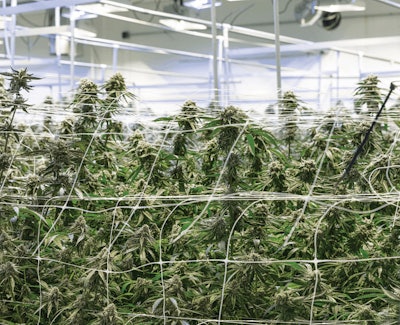
Figuring Out The Flow
When the Meraki team started increasing its cultivation capacity in 2017, it also had to change the shape of its cultivation rooms from rectangular to square (because of the building’s layout, the company was limited to expanding only by width), which wreaked havoc on the air circulation in plant-holding areas. While the company originally could maintain solid air circulation using only oscillating fans, those systems left dead zones in the reformatted rooms. “The perimeter of the room had really good airflow,” Jenkins describes, “but then the center of the room, it was really dead. And then it wasn’t really pushing a ton of airflow underneath the canopy or above.”
Simply adding more fans did not address the problem, nor did placing fans beneath the canopy, and any attempts to adjust eventually would fail when plants were reintroduced into the area. Meraki Gardens spent hundreds of thousands of dollars working with several engineers and vendors to try to dial in the company’s airflow, and while nearly all fell short of meeting the company’s demands, he appreciated the lesson learned: “Trust your instincts, get as many opinions as possible, and then form your own opinion as far as what you think works.”
Eventually, the Meraki team found its “Goldilocks” layout in the form of a new airflow mapping service offered by one of Meraki’s vendors. As they are currently set up, each one of Meraki’s rooms has 25 fans with adjustable speeds, some of which are pointed at the wall. While it may sound counter-intuitive, the results, Jenkins says, are indisputable: “It’s the best airflow we’ve ever had.”
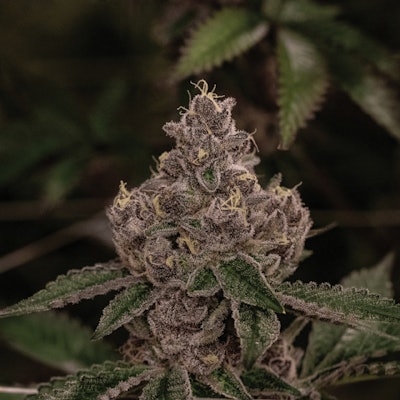
_fmt.png?auto=format%2Ccompress&fit=max&q=70&w=400)
Go With The Flow
With proper airflow, Meraki is noticing a significant drop in pest pressures in its grow rooms. “Fungus gnats just absolutely love the organic material that we feed these plants,” Jenkins says. But with better air circulation, “your control over humidity is much greater. And when you have control over your humidity and you don’t have any areas that are like a swamp or are staying wet for too long, and you’ve got more consistent, faster, dry downs in your soil, that’s not a good environment for fungus gnats.”
Meraki also uses its environmental controls to create a positively pressured environment in each room. When the sealed doors are opened, air rushes out of the room, helping to prevent pests and mold spores from entering that room from another part of the facility.
Having adjustable speed controls on the fans also allows the company to fine-tune the environment throughout the crop’s lifecycle. “When the plants are smaller in the veg cycle or in early flower before they’ve got these big old buds, you can dial [the fans] back … and create an airflow that works for you in that setting,” Jenkins explains. “Then, once you start getting more mass onto the plants, you can crank up the airflow in individual strategic areas in order to just have an extremely consistent environment.” Having extra fans running at a lower speed also increases the canopy penetration versus having fewer fans blowing more vigorously, he adds.
Relatedly, Jenkins stresses the importance that growers use fans, not an HVAC system, to generate airflow. “The problem with [using HVAC to generate air movement] is you’re constantly using your air conditioning units to cool because your lights have a big heat load. And if that cold air is beating down on your plants, that’s going to cause a lot of problems” with humidity and condensation, Jenkins says.
When changing your airflow layout, or (re)designing a room from scratch, he advises that cultivators give the room a few days to normalize and for a proper airflow pattern to develop before forming an opinion on whether the layout is effective. “Every time we’ve ever done airflow and we just turn on the airflow just to see how it works, we’ve typically been disappointed,” he says. “The longer that airflow is on, it kind of adjusts by itself. … [It] took about 72 hours before all these fans [started] working together and it [started] coming up with a pattern.”
And it was worth the wait. After many trials, Meraki’s airflow and overall growing environment are now in balance.












